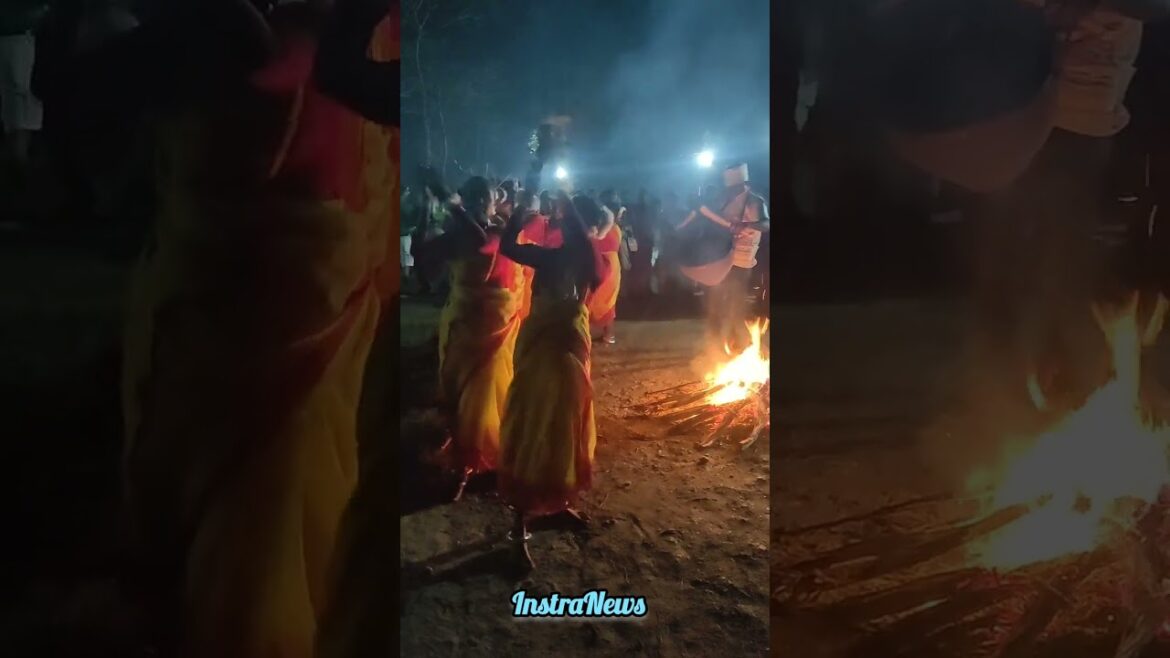Basant Purnima or Dol Purnima is a significant festival celebrated by Hindus and Bengalis all over India. However, today’s Basant Purnima in Majher Dabri tea garden, situated in the middle of the Alipurduar district town, became a historical event. The father of modern tea, Honorable Raja Banerjee, first introduced the practice of moonlight plucking of tea leaves long ago in his famous Makaibari tea garden. Today, this practice has become a significant event in the first CTC tea plantation in Dooars.
The practice of moonlight plucking of tea leaves is unique as tea leaves are usually plucked during the daytime. However, Raja Banerjee brilliantly explained that the bio-chemistry of the tea leaves changes in the light of the moon, creating a charming feeling in the leaves. This phenomenon has been confirmed by testing in the laboratory. The aroma of the tea leaves picked in the moonlight is retained when the leaves are processed overnight and turned into tea in the morning, resulting in the highest quality tea.
The manager of the tea garden explained that just as the aroma of a flower is absorbed by sunlight, tea leaves pick up the full aroma in the moonlight. The full aromata is arrested and retained in the language of the tea garden, resulting in the highest quality tea. This scientific explanation explains why famous writers such as Buddhadev Guha, Vibhutibhushan Bandyopadhyay, or Samaresh Majumder always considered the forest in the moonlit night as enchanting and intoxicating in their writings.
The relationship between moonlight and tides is well-known, and various pains in the body are felt during full or new moon. It is, therefore, possible that leaves of trees and flowers could also be affected by moonlight.
#MoonlightPlucking #TeaLeaves #BasantPurnima #DolPurnima #MajherDabriTeaGarden #AlipurduarDistrict #RajaBanerjee #CTCTeaPlantation #Dooars #Biochemistry #HighQualityTea #Aroma #Tourism #HiddenSurprises
In the coming days, the manager of the Majher Dabri tea garden plans to present such events in front of his tourist friends. Any tourist group from nearby tourist places who want to see tea making techniques can do so for a fixed fee, which will add a new level of tourism in Dooars.
In conclusion, witnessing the historical event of moonlight plucking of tea leaves on Basant Purnima or Dol Purnima in Majher Dabri tea garden is an unforgettable experience. The scientific explanation behind this practice is fascinating and raises many questions about what other hidden surprises might exist in the world.
The History and Science of Moonlight Plucking in Agriculture
Moonlight plucking for tea is a traditional practice that has been used for centuries, but there is limited scientific evidence to support its effectiveness in producing higher quality tea.
One theory behind the practice is that the cooler temperatures and higher humidity during the night can cause the tea leaves to develop a more complex flavor profile. This is because the cooler temperatures slow down the enzymatic reactions that occur in the leaves after they are plucked, which can result in a more nuanced and balanced flavor.
Additionally, some studies suggest that the levels of certain compounds in the tea leaves may vary depending on the time of day they are harvested. For example, one study found that tea leaves harvested during the early morning hours had higher levels of amino acids and caffeine than leaves harvested later in the day.
However, it is important to note that these studies are limited in scope and more research is needed to fully understand the effects of moonlight plucking on tea quality. Additionally, factors such as soil composition, climate, and plant genetics may have a greater impact on the flavor and quality of tea than the time of day it is harvested.
Despite the lack of scientific evidence, moonlight plucking remains a valued tradition in tea cultivation, particularly in China and Japan, where it is seen as a way to honor the cultural heritage of tea farming.

